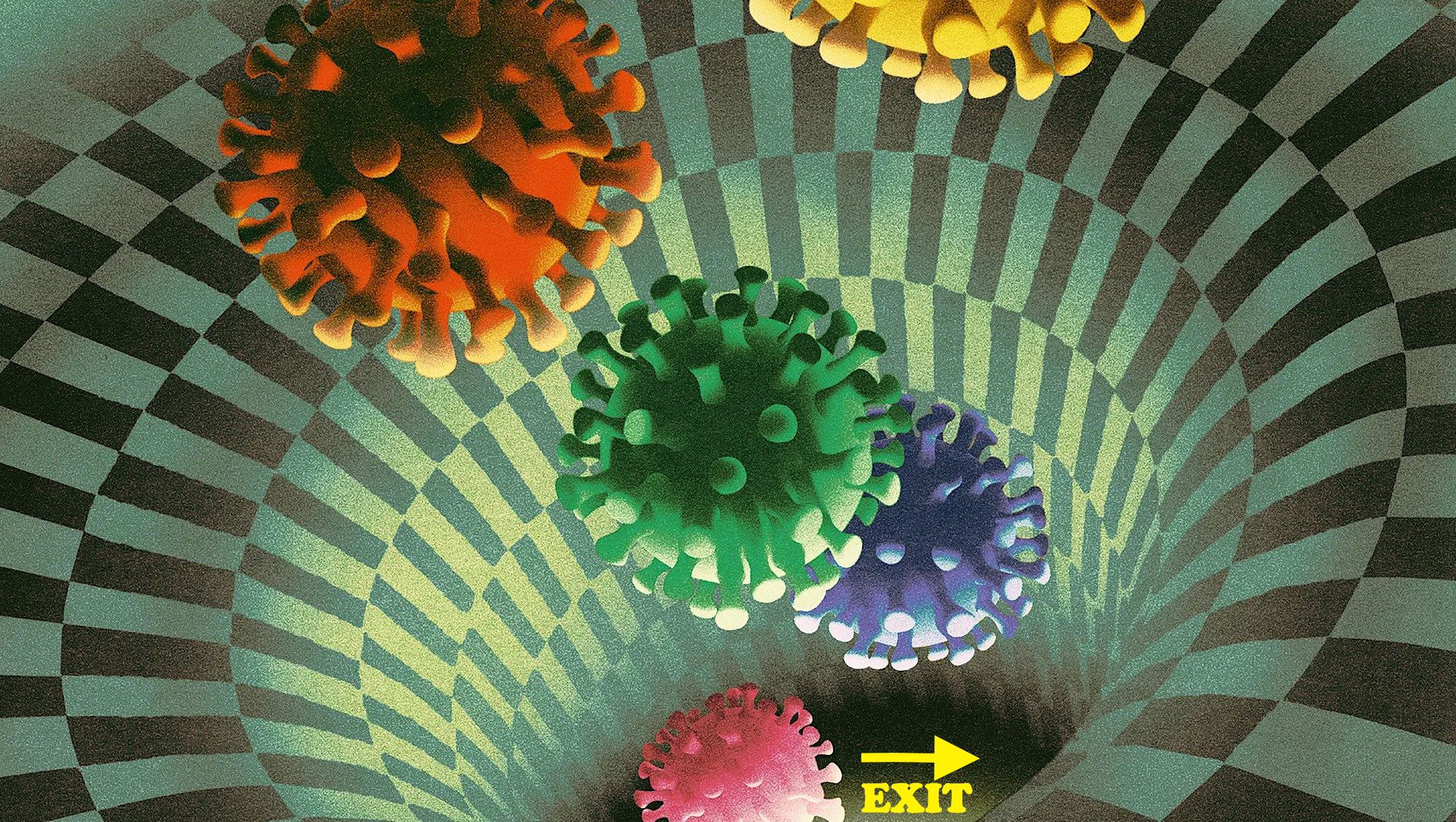Article Summary
In fact, the Covid-19 disease has disappeared. The characteristics of the current infection by the Omikron variant are very different from those of the previous variants. Covid-21 is milder and results in much less seriously ill. This gives hope for the future and calls for a radically different approach in the autumn.
–
Read full article: Covid-19 is over
Reading time: 6 minutes
OMT members are concerned
Friday there was (again) an article at the NOS to that effect, in which OMT members are concerned about the fact that the virus could flare up again in the autumn and meanwhile we “lose sight of the virus” due to the test policy.
OMT members Koopmans and De Jong indicate that due to the few tests performed, insight into the virus is being lost. They propose through sampling among the population that insight into the virus will improve. It is stated in the article that the virus is still clearly present. Because the sewage figures at the moment are twice as high as exactly a year ago, while the number of positive tests is only a third of then (around 1000 now per day). If you’re on it Coronadashboard If you look, you can see that the number of tests performed a year ago was about 30,000 and now barely 1,500 per day.
Fascinating, however, is that the article does not include the following two figures:
- Exactly a year ago, hospital occupancy was three times as high as it is now (and probably now relatively more with patients lying there WITH Covid than BY Covid.)
- Exactly one year ago there were more than 500 Covid patients in the ICU, there are now 25. So 20 times less!!
If you see the completely different pressure on healthcare now compared to a year ago, the central question is of course: what is the relevance of the figures that the OMT members would still like to see collected? After all, the clever research monitors which part of the population has flu-like symptoms. And by following the samples from 40 GP practices by NIVEL, it also emerges which viruses are doing the rounds and to what extent.
I’ve been thinking about that subject during the past week, when two people close to me tested positive with a rapid test. One had flu-like symptoms (which lasted a few days), the other had a cough, without a fever. What had those people done with these complaints three years ago? The first probably stayed at home for several days, the second probably did nothing (and used some self-help tools).
While we have had virtually no measures in the Netherlands for three months now, we have reached a near zero point on the ICs. While even at the end of January/beginning of February, various OMT members indicated that the hospitals were still under high pressure.
The definition of Covid-19
The use of Corona, SARS-2 and Covid-19 together ensures that we often regard it as one pot wet. But right now it is very important to recognize that difference. Read what the RIVM defines:
- The coronavirus SARS-CoV coronavirus-2 causes the disease COVID–19.
But if you consider the characteristics and course of that disease up to and including the Delta variant in relation to the Omikronvariant now, then there are big differences in the symptoms. This research from England last April. compares the results of a survey of those infected by Delta and those infected by Omikron. But the differences can also be seen from other publications.
- Omikron affects much less the lower respiratory organs (lungs) than Delta.
- Loss of taste/odor was much more the case with Delta than with Omikron.
- With Omikron there is clearly more sore throat and a hoarse voice.
- The symptoms with Omikron last 2 days shorter on average.
- Hospital admissions/ICU admissions are clearly less the case with Omikron.
What I find very striking, and I heard this from various doctors, is the following: With Delta and the predecessors, it could happen that Covid-19 patients had their entire system collapse after about a week. Blood oxygen saturation dropped rapidly, often leading to hospitalizations or worse. In my podcast with GP Jan Scherpenisse in Drenthe from more than a year ago we discussed this development and how the GP could ensure that people did not have to go to hospital. But at Omikron that hardly seems to happen. That is the reason why so few Omikron patients end up in the ICUs.
But if the appearance of the disease caused by the Omikron variant is so different from the previous variants, then the name Covid-19 should also no longer be used for the disease caused by the Omikron variant. caused!
Yes, it is still a Coronavirus, but the disease is very different than before this year. With, for example, also a different proportion of symptomatic and asymptomatic infections. With a different reproductive factor and a different Infection Fatality Rate (proportion of infected people who die). In this article from March 2022 this infection fatility rate with Omikron is estimated to be 0.035%, lower than that of the flu (0.04%). And a factor of 10 times lower than the estimate for infections of the first year.
I regularly read that the lower infection fatality rate of Omikron is mainly due to the vaccination. But when I read the worldwide data, it seems more likely to me that it is mainly due to the different course of symptoms of the Omikron variant itself.
What name should be given to the disease, which is caused by the Omikron variant, I cannot determine. I will call it Covid-21 from now on.
The population now has a much higher degree of immunity against this variant of the SARS-2 virus than in 2020. Although the contagiousness of this Omikron variant is considerably higher than that of the variants before it and so is the reproductive factor, the protection is also much higher. I will stay away from the discussion why this is mainly (contact with the virus and/or vaccination). But partly because Covid-21 has much less serious consequences, we have ended up in a completely different situation than before January 2022.
What exactly is the relevance of knowing whether or not your cold or flu-like symptoms are caused by a coronavirus or by another virus? We wouldn’t have determined that before 2020 if we had those complaints, would we?
As long as Covid-21 has roughly the consequences we know now, we as a society should deal with it as we always did with the influenza virus or any other virus of the respiratory organs.
The course of Covid-21 into the future
There are now different versions of the Omikron variant. Meanwhile, the versions BA.4 and BA.5 are the fastest growing.
It is interesting to watch the developments in Gauteng. Omikron first appeared there in November 2021. The new version BA.4 and Ba.5 are now also strongly present there. But if you look at the development of the deaths, that was with Delta, 1 year ago at its peak with 250 per day. With Omikron BA.1, it was at its top 40 per day at the end of 2021. And now that number with BA.4 and BA.5 is 12 per day. While BA.4 and BA.5 have a basic reproductive factor that is clearly higher than the first Omikron version, there is no indication that the severity of the infection is greater than that of the first Omikron variant.
The chance of getting Covid-21 if you have already had Covid-19 is definitely there. That is significantly higher than if you had had Covid-19, had it again. It is estimated to be a factor of 10 times higher. But the first studies do show that if you have had Covid-21 (i.e. were in the first group to be infected by the Omikron variant), your chance of being infected again by an Omikron variant is small again.
The chance that Covid-21 will lead to much worse cases of illness in the autumn is very small!
But be aware that this is a direct result of the fact that we have defined Covid-21 as a disease with the characteristics, as we now know it from Omikron.
The big question is whether there will be a new variant of the SARS-2 virus in the next few years, which will lead to a more serious disease pattern, as we now know with Covid-21. And which we then have to give a different name than Covid-21!
No one can answer that with any certainty.
But there are a number of components that have put us in a much more favorable position than in 2020:
A new variant, which would “want” to spread en masse, has two major obstacles. It must be more contagious than the prevailing variant (ie Omikron BA.X). And it will meet with an “immune defense” among those of the population who have gone through the earlier variants. That was not the case in 2020.
Finally
Just when we are prepared to call the current infections Covid-21 and no longer Covid-19, then we can look at future vaccinations / boosters in a different way. For whom is it still relevant to take that vaccination/booster? What does it still protect against (by age) and what are the possible risks?
I cannot see into the future. But it wouldn’t surprise me if in the coming autumn/winter the pressure on healthcare will come from viruses/pathogens other than infections, which are caused by a new SARS-2 variant. But if we were to lump everything together, we risk having to undergo measures again, which on balance cause more damage than they prevent. Covid-19 is thankfully over.
Support our site with an occasional (small) donation. Then click here.
–


